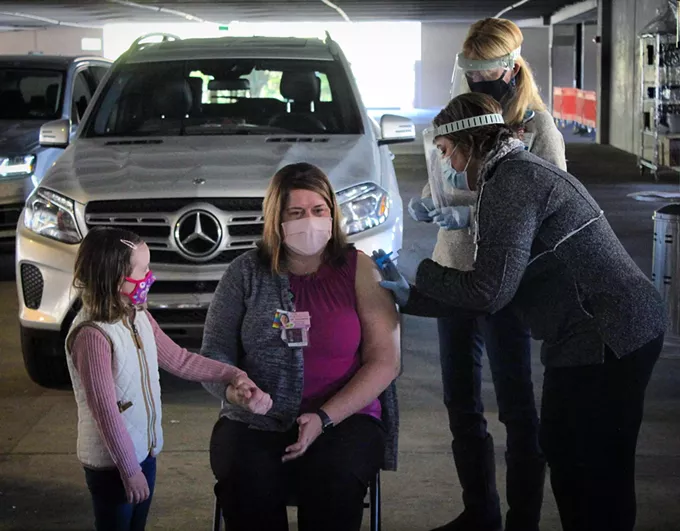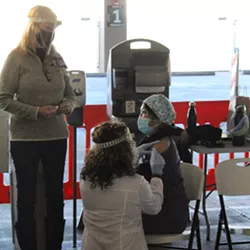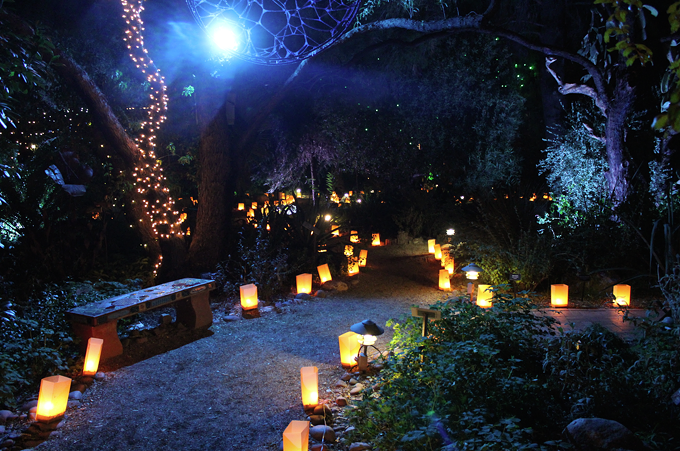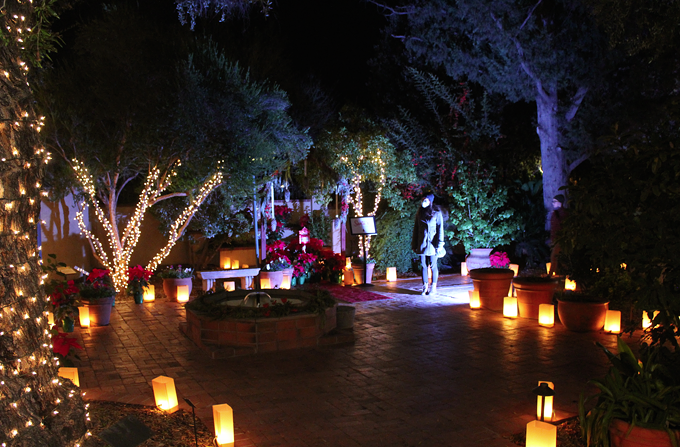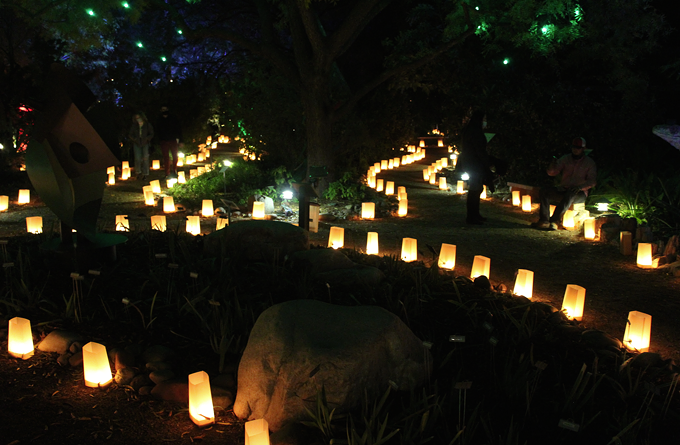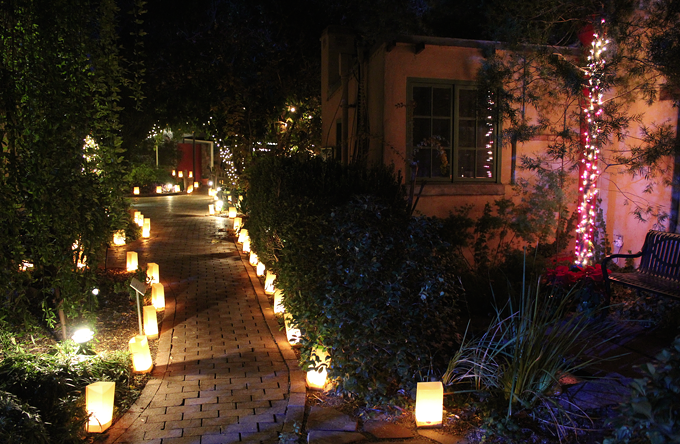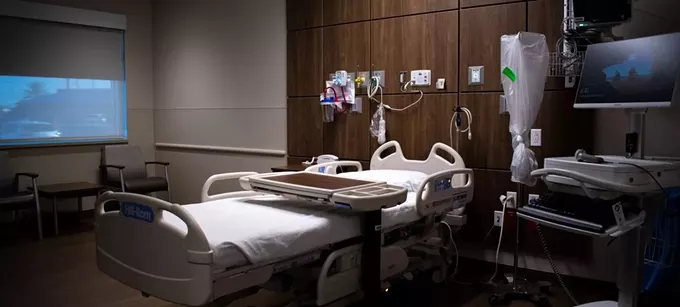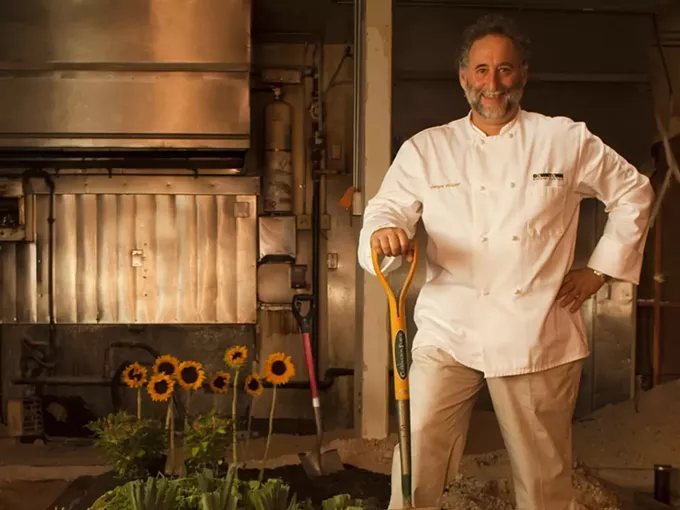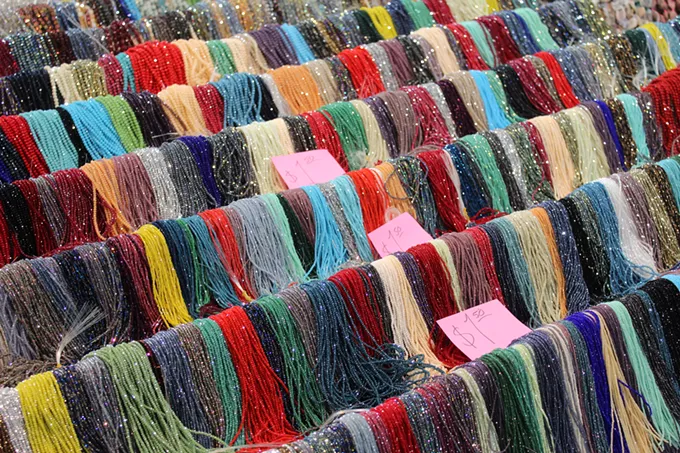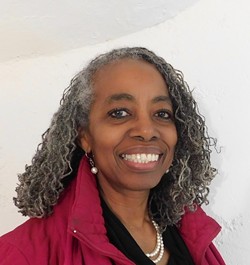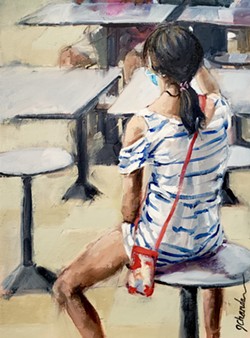Thursday, December 31, 2020
The Internal Revenue Service and the U.S. Treasury Department announced the second round of Economic Impact Payments are in the process of being distributed to millions of Americans who received a first round of payments last spring.
Individuals are eligible for $600 and married couples who file a joint return will receive $1,200. In addition, citizens could receive an extra $600 for each qualifying child. Dependents over the age of 17 are not eligible for the child payment. Individuals who filed an adjusted gross income of more than $75,000 or married couples who made more than $150,000 in 2019 are ineligible for the payment.
In most cases, funds should begin arriving either through direct deposit, paper check, or a debit card by early January. The IRS began mailing paper checks on Wednesday, Dec. 30 and direct deposits have already arrived for some Americans.
Those who did not receive the first round of payments earlier in the year will still be able to claim it on their upcoming 2020 taxes. IRS representatives recommend taxpayers to review the eligibility criteria to make sure they maximize their benefits. Economic Impact Payments will be referred to as Recovery Rebate Credit on Form 1040 or Form 1040-SR due to being an advance payment of the RRC.
The second round of Economic Impact Payments is funded through the Relief Supplemental Appropriations Act of 2021, which was approved by lawmakers earlier this week.
To check if your Economic Impact Payment has been processed, check out the Get My Payment tool at IRS.gov.
WASHINGTON – The numbers can be numbing. And that’s exactly what health officials fear.
More than a half-million Arizonans have contracted COVID-19 and more than 8,700 have died from it so far, according to state data. The disease is surging again, with one week this month seeing an average of 7,770 new cases a day, soaring past the previous high set in July of a seven-day average of 3,482 new cases.
Hospital capacity is being stretched to the breaking point, with COVID-19 patients taking up a record 61% of beds in the state’s intensive care units as of Tuesday, and health care workers struggling under the strain.
But news of the disease, while prominent, does not command the headlines or the attention it did just months ago.
“The phenomenon some call COVID fatigue is real, and it’s dangerous,” said Dr. Cara Christ, director of the Arizona Department of Health Services, in a late-November video update.
Thursday, December 24, 2020
Arizona in Focus is a podcast from Cronkite News, the news division of Arizona PBS. This season we are focusing on science and technology stories that explore everything from driverless cars to innovating a vaccine during the pandemic.
PHOENIX – Paulina Ochoa never had a problem sleeping until the COVID-19 pandemic began in March and life dealt her a series of serious setbacks. She lost both her jobs, her car was stolen and her aunt died – and that’s when the nightmares started. The dreams got so bad they sometimes left her paralyzed in bed.
Ochoa isn’t alone. A sleep study conducted by University of Arizona researchers monitored the role of insomnia during the pandemic, and more than 50% of 1,000 participants reported experiencing insomnia.
Listen to the full podcast here.
Ochoa, a sustainability student at Arizona State University, tried to wear herself out by staying up until 7 a.m. so she’d be forced to finally fall asleep.
Insomnia eventually made her imagine hearing voices or see unsettling shadows.
“I was just so scared, you know? I had two occasions where the ‘voices’ thing started happening,” Ochoa said. “I just didn’t even want to close my eyes.”
Michael Grandner, who runs the Sleep and Health Research Program in the Unversity of Arizona’s Department of Psychiatry, said he has seen a great number of people with sleep problems this year.
“With everything going on during the day, they have a real hard time disconnecting,” he said.
Grandner, who also sees patients at the Behavioral Sleep Medicine Clinic at Banner Health, said insomnia occurs on a spectrum.
“So there’s insomnia, I would say with a lowercase ‘i’, which is just sort of the experience of being unable to sleep sometimes,” he said, adding that many people deal with insomnia at some point in their life.
“Then there’s the line into what we call insomnia disorder, which is actually a diagnosable medical condition that usually does not go away on its own once you meet criteria for it.”
Grandner said if it takes more than 30 minutes to fall asleep for at least three nights a week, and if the pattern has been ongoing for months, you may have insomnia.
Lauri Leadley, president of Valley Sleep Center, a company with several locations in metro Phoenix, said stress is a common cause of insomnia.
“Insomnia is literally the inability to escape your thoughts. And during stressful times, our bodies create cortisol … our ‘awake’ hormone,” Leadley said.
Unable to escape her stressful and frightening thoughts, Ochoa tried to force herself to exhaustion. But even when she finally fell asleep, she said, nightmares would jolt her awake.
Nightmares can do double damage, said Denise Rodriguez, a clinical psychologist who specializes in behavioral sleep medicine to treat insomnia at Banner Health.
“Typically, for a lot of folks who do struggle with nightmare disorders, it’s not just that they’re having a nightmare, but that the nightmare prevents them from going back to sleep,” Rodriguez said.
After losing two jobs and switching to online learning at ASU, Ochoa’s daily routine became less active. Rodriguez said that could cause an increase in dreaming.
“Some of the theories behind why we’re dreaming more is that we’re under-stimulated during our day … and so our brain is trying to give us that extra stimulation at night,” Rodriguez said.
Grandner said inactivity during the day is a common denominator in people with insomnia.
“Sleep difficulties are probably the most reliable predictor of poor mental health,” he said, “and especially in terms of depression and anxiety.”
Poor sleep and suicide rates are directly correlated, Grandner said.
“There have been over 50 studies now that when you pool them together, people who have significant sleep problems, whether it’s nightmares or insomnia, are about three times as likely to be thinking about suicide,” he said.
Ochoa said she was already experiencing stress and anxiety in daily life, which insomnia only made worse. Then, in June, Ochoa tested positive for COVID-19.
“So I was still having trouble sleeping and now I had the added factor of like, (I) can’t breathe right,” she said.
Insomnia can significantly increase the chances of getting sick, Grandner said.
“If you want to have a robust immune system,” he said, “it’s important to sleep. There’s data that shows that people who aren’t getting enough sleep, they’re more likely to get sick, especially for viral infections.”
To get better sleep, Grander suggests reducing screen time, getting sunlight exposure shortly after waking up and exercising during the day rather than at night.
Sleep is programmable, he said, and it’s important to train the brain that the bed is meant for sleep, not for rehashing the day or planning the next.
Before getting in bed, he said, “Check your schedule, process all the stuff that you need to process so that by the time you get into bed, you’ve already done all that work.”
Ochoa took a different approach.
“I actually kind of got it solved. I actually had to go ahead and resolve to getting a blessing from this church,” she said. Her visit to the church was just over two months ago.
The blessing consisted of two missionaries applying oil to her forehead, placing their hands on her head and praying.
“All of a sudden, I could sleep,” she said. “And I think maybe it was just like a mental thing. You know, maybe it was just my fears and anxiety.”
So far, Ochoa said, she’s having fewer nightmares and sleeping much better.
Thursday, December 17, 2020
On Thursday, Dec. 17, Banner University Medical Center and Tucson Medical Center began the first round of COVID-19 vaccinations in Pima County. While a small number of test vaccinations were injected earlier this week, today marks the official beginning of the Pima County Health Department’s three-phase plan, beginning with frontline workers.
At Banner University’s northside campus, Iris Delfakis, a nurse at the University of Arizona’s Cancer Center, volunteered to receive the first injection.
“I’m all for it,” Delfakis said. “I know there are some against the vaccine, but I think everyone should get it. We’ve never seen something like COVID in our lifetimes.”
According to Rebecca Ruiz-McGill, information specialist for Banner UMC, the medical center needs to “walk before we run,” with vaccine administrations. Because COVID-19 testing involves similar logistics, Banner expects its vaccine process to be in full order within a week or two. By the end of the month, they expect to be administering more than 100 vaccines per day.
Banner’s vaccine station was in its parking garage and saw several hospital staff in its first hour. Among the staff was Dr. Melissa Zukowski, who works in Banner's Department of Emergency Medicine and was prioritized for vaccination because she works in a COVID unit. Those who receive their vaccine will need to receive a second booster injection three weeks after their first.
Tuesday, December 15, 2020
COVID-19 threatened to entirely remove this beloved event from the calendar. But TBG reworked their plans and are instead hosting "Wanderland," a similar event with extra precautions. Much like Luminaria Nights, Wanderland sees the gardens filled with holiday lights and decor, but there are no performers and capacity is greatly reduced.
As the name suggests, guests are encouraged to move through the park rather than gather around performers as in years past, for the sake of social distancing.
Instead of the usual jazz bands and carolers, the gardens are still featuring some of the Dia de los Muertos sculptures from their "La Calavera Catrina" exhibit among the Christmas lights.
The Tucson Botanical Gardens' Wanderland takes place Thursday, Friday, Saturday and Sunday from 5:30 p.m. to 8:30 p.m. through Sunday, Jan. 3. Tickets are $15. Reservations Required. For more information, visit tucsonbotanical.org/event/wanderland
Wednesday, November 18, 2020
As Arizona continues on track for its worst month of COVID spread, Banner Health reinstated its no-visitor policy at all Banner – University Medicine locations in Tucson, effective 6 p.m. today. According to Banner, this visitor ban to reduce COVID spread includes outpatient and ambulatory locations, such as clinics, urgent care locations, imaging centers, surgery centers and occupational health services locations.
There are four exceptions to the visitor restrictions:
- Pediatric patients (under the age of 18) may have one guardian or support individual with them.
- Laboring mothers may have one support person with them.
- Persons with disabilities who, due to the specifics of the disability, require assistance from someone in order to effectively participate in the healthcare process will be allowed to designate a support person to accompany them while in any Banner facility.
- End of life visitations will be accommodated.
Pima County Administrator Chuck Huckelberry noted that the county had seen 4,620 cases in the first 17 days of November.
“For the first 17 days in July, the worst month of COVID-19 case increases to date, there were 5,057 cases,” Huckelberry said in a Nov. 17 memo. “Therefore, we are on pace to exceed the total number of monthly COVID-19 infections in our previous worst month, July.”
Thursday, October 29, 2020
“This is unmistakably a tremendously hard time for small businesses, especially restaurants the world over,” Wilder said in a prepared statement. “For me personally it has also been an opportunity to take stock of where I am in my career and ask myself, is the day to day of running a restaurant really the best use of my time now?”
After more than 50 years of working as a professional chef, Wilder announced he will use this time to focus on his family.
In addition, Wilder's Carriage House will continue its catering and group event business. Wilder will produce and present a series of online cooking classes: "Cooking in the Time of Covid" which will feature easy to prepare meals at home.
"These last 10 years downtown have seen a rebirth of our urban core," Wilder said. "The pandemic is a setback and my heart aches for so many that are struggling to keep their doors open. Even in these challenging times, I am constantly amazed and inspired by the innovation and creativity of the next generation. Downtown Tucson will continue to thrive in the years to come. Like the desert we live in, we are a resilient community. I am so grateful for all this city has given me and my family and I am eager to continue to serve the community moving forward.”
Wednesday, October 28, 2020
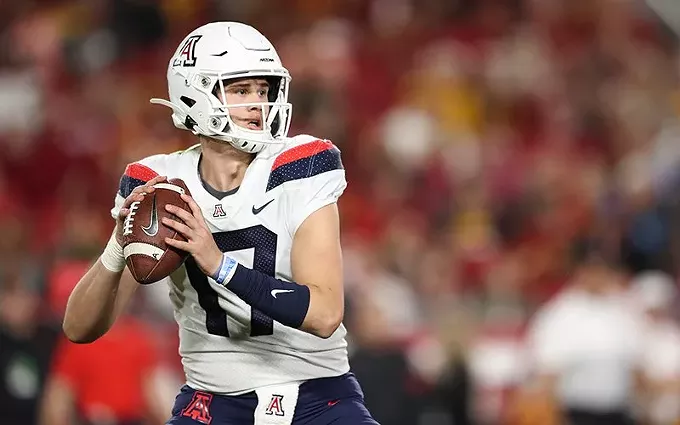
PHOENIX – Saturdays on the West Coast look and feel a lot different this fall.
In a time when college communities from Tucson to Seattle, and everywhere in between, are accustomed to college football Saturdays, the COVID-19 pandemic has wiped out nearly half of the typical season. And for a time, it appeared as if there would be no Pac-12 Conference football at all.
With their season in limbo, the conference’s players were forced to watch as some of the country’s other premier leagues played actual games.
“I love football, so I kind of want to watch it, but I also get pissed off when I’m watching it because I know I should be out on the field playing the same day,” Washington State running back Max Borghi said. “No one really loves watching football if you should be out there playing.”
However, the Pac-12 finally received its reprieve in September, when the conference agreed to return and play an abbreviated seven-game schedule beginning November 7. It will mark the latest return to play for any of the Power Five conferences.
“It was disappointing at times, but as a team, we never really got down,” Arizona quarterback Grant Gunnell said. “We just kept working, hoping and believing that we were going to have a season eventually, whether that be in the fall, winter or spring.”
Because the Pac-12 was much later to return than its Power Five counterparts, the conference’s players found themselves in a unique situation with their fall camps taking place while teams in other conferences were already playing games.
“It’s definitely different,” Southern California safety Talanoa Hufanga said. “Usually, you’re ready to play in September or late August. You’re itching just to be on the field and not watching other teams.”
However, while it may be difficult for players to watch rather than play, most are trying to take advantage of the unusual circumstances presented by a pandemic.
“It’s been interesting to sit back and watch college football from a viewer’s perspective after having played it for a few seasons,” Utah wide receiver Britain Covey said. “I feel like everybody’s becoming a student of the game.”
Covey added that even a shortened season “with daily COVID tests, with all these protocols and restrictions,” beats the alternative of practicing and training without getting to play the games.
“In my mind, (that) is what hell would be like – just football practice with no game to look forward to,” he said.
Covey isn’t the only player that took advantage of the extra time off to learn the game more. Two-star running backs representing the Oregon schools made the most of the weeks and months they spent waiting for the season.
“This time off, I’ve been watching a lot of film by myself, trying to learn the game of football more, learning offenses and defenses and different stuff and trying to find new things that I can see,” Oregon State running back Jermar Jefferson said.
“Watching college football on a Saturday kind of hurts me a little bit, but it helps me a lot, learning the game of football. Sitting down and seeing football at home can help your game on the field when you’re playing on Saturdays. You can learn stuff from other running backs or other offenses… It’s good, and it’s bad.”
Oregon running back CJ Verdell took an approach similar to his rival’s.
“I’ve definitely been watching other teams, trying to see the things that they do and maybe even their mistakes, and just trying to use that as a learning tool to see things we shouldn’t do when we go into a game and we start playing,” Verdell said. “I’ve definitely used this time to reflect on those things.”
Given their nearly identical strategies for handling the unexpected time away from football, the battle between those Beaver State rivals should be fascinating to watch during the abbreviated season. But then it would have been even without the pandemic.
After all, Jefferson finished third in the Pac-12 in rushing in 2018, and then Verdell topped him by ranking second in 2019. They expect to be at the top of the rankings again this year.
Verdell said one of his goals for 2020 is to rush for 1,000 yards, which would be quite a feat in a seven-game season.
Players in the Pac-12 South also took advantage of their unexpected free Saturdays. For Arizona State quarterback Jayden Daniels, the delay was an opportunity to root for other sophomore quarterbacks around the country.
“Just being able to watch football, watching those college games, I’m very interested in watching the guys that are in my class: Spencer Rattler, Bo Nix, Sam Howell,” Daniels said. “Just seeing what those guys are doing so far, I’m just happy for their success and happy to see them just keep balling out.”
Daniels will be a key figure in the Pac-12’s return. As of now, the conference’s first game is scheduled for Saturday, Nov. 7, when ASU will visit USC. Fox Sports picked up the game for it’s “Big Noon Saturday” matchup beginning at 10 a.m. Arizona time.
The season-opening matchup marks the Pac-12’s first appearance in Fox Sports’ principal college football timeslot and is expected to bring major exposure to the conference, which is accustomed to playing most of its games later in the evening after much of the viewing public has stopped watching football for the day.
Hufanga was confident about USC’s ability to be ready for the kickoff at 9 a.m. local time in Los Angeles. Turns out the pandemic has prepared the Trojans for that, too.
“We wake up at 5:15 most days just to get a COVID test in at 6 a.m., so for us to be ready at 9 a.m., I can’t tell you that we haven’t been training for this for two years, three years, since we’ve been in college,” Hufanga said. “We’re going to put the ball down anywhere on the field at any time, anywhere, anyplace, so we’re just extremely excited and grateful for this opportunity.”
Still, the Pac-12’s players have about two weeks to get through on and off the field before a game day arrives, and it could be challenging for some.
“It could be (hard) for a lot of people on the team,” said Washington defensive back Elijah Molden. “You get on the college scene, and you want to have a social life. And now that’s taken away from us, but that’s our responsibility now. We’re supposed to deal with that. For some people, it’s easy. For me, it’s pretty easy just because I go home, take care of business and then come here to work. But it’s definitely a challenge.”
Tuesday, October 27, 2020
Today, the Tucson Gem & Mineral Society announced that the 2021 Tucson Gem and Mineral Show is canceled. While the overall Gem, Mineral & Fossil Showcase season that takes over Tucson from February to March is home to numerous showcases and exhibits, the Tucson Gem & Mineral Society's Gem and Mineral Show is the largest and the show that launched it all.
"COVID-19-related risks clearly make it impossible for TGMS to put on anything more than a shadow of our accustomed vibrant event," representatives of the Tucson Gem & Mineral Society announced in a prepared statement. "Restrictive COVID-19 travel policies mean many of our major domestic, and most of our international museum exhibitors and friends either won't or can't travel here. This effectively eliminates both our exhibits and educational programs."
However, the society has announced that they intend to use this time to plan for a "blockbuster" 2022 show.
"Most importantly, TGMS does not want to be responsible for a single COVID-19 fatality or serious illness. Our show is run by volunteers and many of us are in high-risk demographics...as are many of our participants and attendees," the statement continued. "Consulting closely with the Pima County Health Department, the Mayor and City Manager’s offices and the good folks who run the [Tucson Convention Center], it is clear that applying the mandated COVID-19 protocols to reduce risk would mean drastically restricted attendance and curtailment of many of our programs."
In 2018, the total Tucson Gem, Mineral & Fossil Showcase brought an estimated economic impact of $120 million to the City of Tucson.
Thursday, October 22, 2020
As the drums ring out the Chinese New Year in a Singapore market, two young women wearing face masks watch the celebration. It's a scene characteristic of local artist Jacqueline Chanda’s work, which often allows the viewer to construct their own narrative of a scene.
“I like to catch these those kind of scenes where people can say ‘I wonder what they were thinking?’ or ‘I wonder where was this guy is going?’,” Chanda said. “Did he have intent or was he was he simply taking a stroll?”
Chanda’s painting, “Girl with a Turquoise Face Mask,” is based on a photograph she took while on vacation in February. The artwork is featured in the “Great American Paint In,” a new collection of works which shares artists’ experiences of living through the pandemic.
“The Great American Paint In,” now available online, documents the emotions felt by professional artists across the country, with 48 states represented in over 250 pieces, according to project founder, artist and engineer Bill Weinaug.
“I put a lot of effort into trying to make sure I did not lose my business at the end of the day, because I had no clue when the end of the day was coming,” Weinaug said. “And my daughter's telling me ‘Dad, you just can't shut down you need to stay relevant. This will be over with someday.’”
His daughter pitched him the idea of taking the “plein air” painting events he hosted at his eco-resort Wekiva Island in Longwood, Florida, and moving them online. Arists gather for plein air painting events and simultaneously paint their outdoor environment.
“In our case they go out into the wilderness and they paint for a week,” Weinaug said. “So they come with blank canvases, every day they add art and we build a temporary art gallery.”
Thus, “The Great American Paint In” was created. Artists paint their response to the pandemic and the emotions of quarantine, and submit the work to a jury who decides if it merits inclusion in the project.
The concept was a natural fit for artists nationwide with ample time to practice their craft but without access to galleries or events. The project’s website allows the artists to be able to sell their work and promote themselves.
Weinaug said he used his training as an engineer to investigate previous pandemics and said he didn’t see much art being created at the time of the outbreaks.
“We wanted to document what was going on in America during this pandemic so that future generations could look back and see it through the artist's eyes,” he said
Through the eyes of Chanda’s since returning to the United States somethings that haven’t changed is she goes into her studio to paint but finds herself accumulating more of her work.
“It's really been that sense of isolation, not being able to be connected with my friends, my daughter lives with me and my mother is not too far from here ... So I see her often enough, but it's been a different sense of isolation, it's an unwanted isolation,” she said.
Weinaug’s vision for the project is for it to serve as a textbook example of how to paint emotion. He intends to publish the collection as a book and is in the process of selecting a publisher but noted: “We're still in the middle of the pandemic and the story is still being written.”
To view the collection and Chanda’s submission, visit: thegreatpaint-in.com


